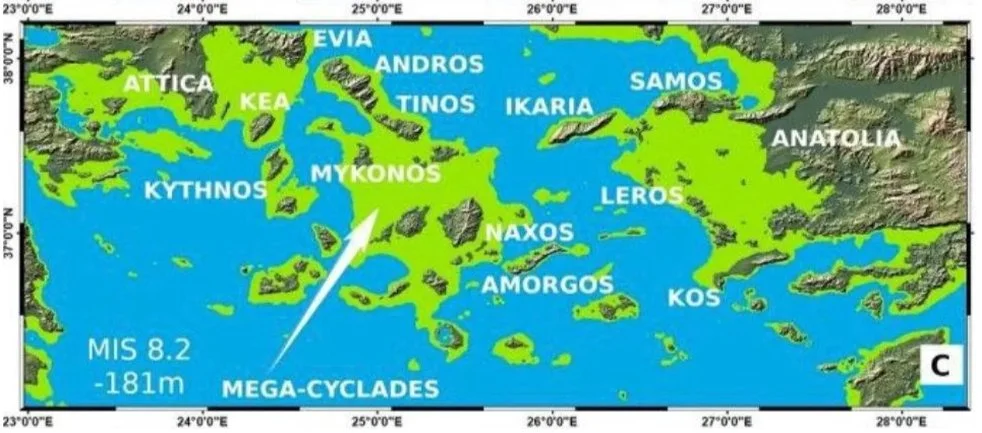New analysis from the University of Patra, Greece
The question of when the ancestors of modern man acquired the cognitive and technical ability to cross the seas by sailing has not been precisely answered. We knew that Homo sapiens was the first member of the Homo family to succeed, but discoveries in recent years provide evidence that the earliest hominins were more advanced than we thought.
Archaeologists from the University of Patras have found ancient objects on the Aegean islands, which existed long before the appearance of Homo sapiens. This means that earlier humans had found a way to cross large bodies of water, raising the question of when they started sailing, which is difficult to answer since boats and canoes in the past were wooden and impervious to time. Certainly not for hundreds of thousands of years, making finding them today impossible.
However, the analysis by geologist Giorgos Ferentinos and his team includes bones and stone tools that have survived the passage of time. Tools dating back 476,000 years have been discovered on the Aegean islands. In Lesvos, Milos and Naxos, tools have been found related to the tools of Homo erectus in Africa and Asia 1.9 million years ago. So how could these tools have reached the Aegean islands?
Previous studies have shown that prehistoric humans walked across seas during the Ice Age, when sea levels receded and land bridges were created. In order to find out if this also applies to the Aegean, Ferentinos reconstructed the geography of the region 450,000 years ago. So he found that at its lowest level 450,000 years ago, the coastline was 225 meters lower than it is today.
This means that many Aegean islands were connected to each other by land. The Cyclades were essentially a large island. But it remained an island, surrounded by sea, cut off from the mainland for at least 5-7 kilometers in glacial conditions and 40 kilometers in warmer periods. However, the island would be visible from inland, offering an attractive incentive to explore new areas.
This does not prove that they built boats, but they could have created primitive rafts or simply floated by holding onto a tree trunk.
This means that these hominins already had developed cognitive abilities. To cross and colonize an island requires cooperation, a common language and complex communication.
The study did not go further than half a million years into the past because we do not have reliable data for the coastlines of Greece and Turkey before this period. However, the researchers believe that we may be talking about crossing the sea up to a million years ago with Homo erectus.
In addition, since ancient humans could cross the Aegean Sea, they could also cross the Strait of Gibraltar.
The general acceptance is that erectus left Africa via the Sinai Peninsula in Egypt, but then we have to wonder how they got to Spain before appearing in the rest of Europe. The most logical explanation is that they crossed Gibraltar. I think we have to review what we know about the dispersal of man, not only in Greece but also all over the world.










